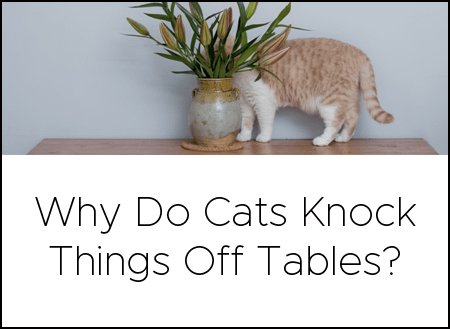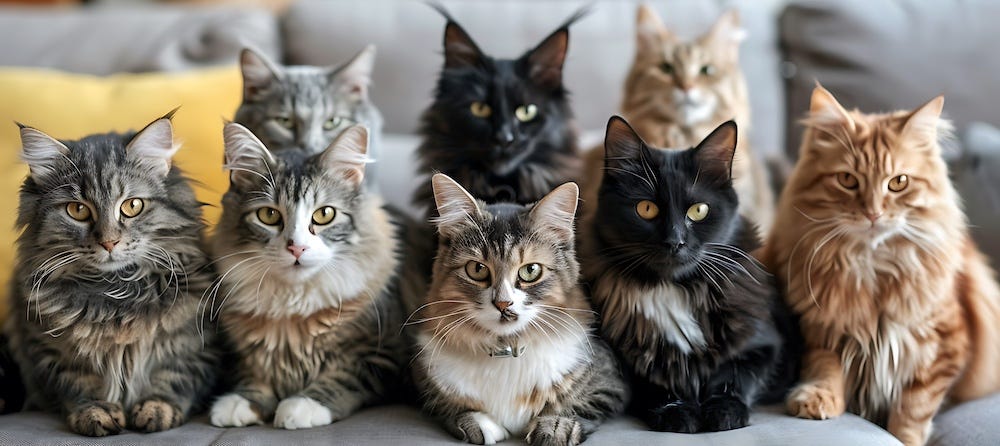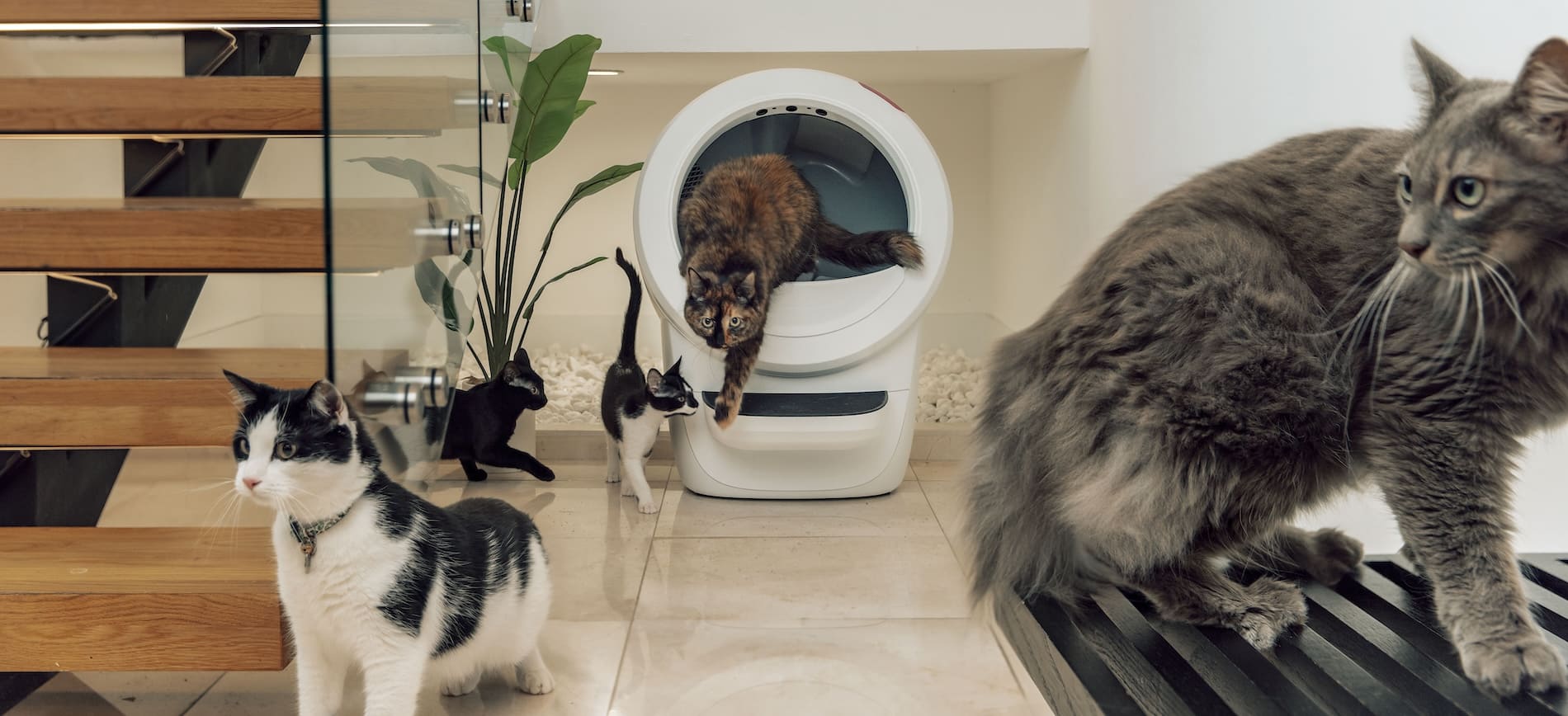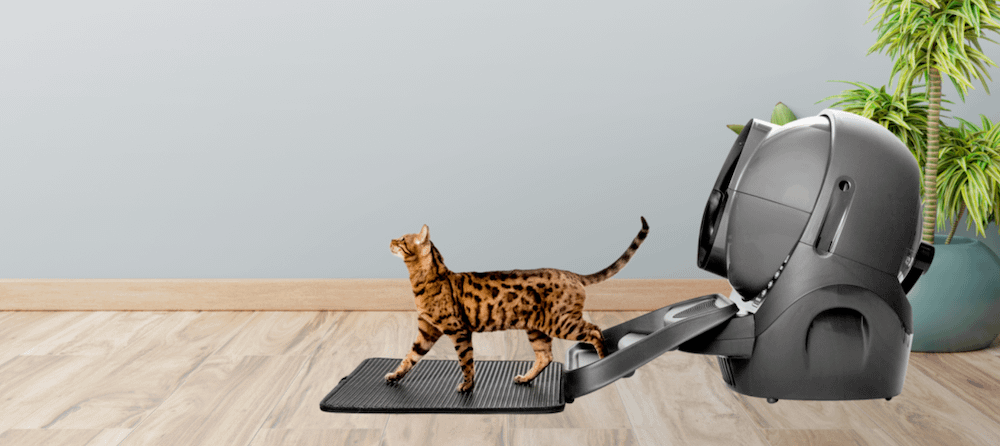Anyone who grew up on a farm knows the ubiquitous barn cat: This feline typically scatters at the first sign of human life (unless said human is bringing food) and prefers their cat colony to the comforts of the indoors. You might be surprised to learn that some of our most beloved cat breeds today started out on the farm.
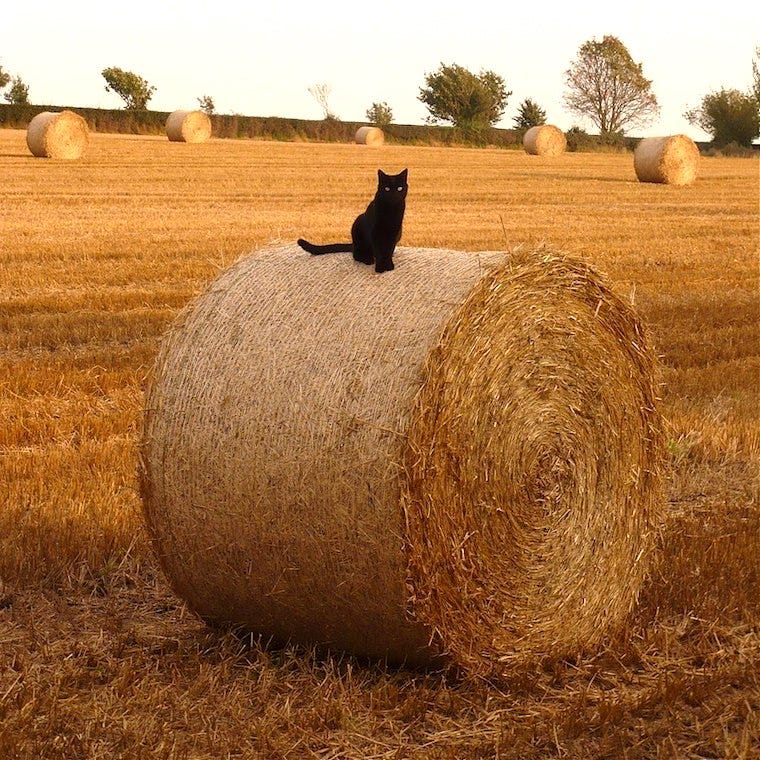
The plight of the barn cat
The average farm cat is what you’d call a mouser, or a cat that keeps rodents and other pests away from grain and feed stocks. This feline function began some 10,000 years ago as agricultural practices spread. Farmers benefited from rodent control, while cats were able to indulge their hunting instincts and carnivorous diet requirements. This inevitably led to the domestication of house cats.
However, the life of a modern barn cat is a hard one. These cats tend to be feral (to varying degrees), not spayed or neutered, and lacking essential feline vaccines. Farmers may not provide supplemental food sources (such as kibble), so the cat colony is forced to move on to another location after eliminating current pests.
Improve the life of your neighborhood barn cat
If you’re a farmer, rancher, or business owner with mouser cats on your property, there are several ways you can extend and improve the quality of life for these felines.
- Practice TNR: Trap-Neuter-Return (TNR) is a humane way to help curb the overpopulation of feral cats. The average fertile cat can produce three litters per year with 4-6 kittens per litter. Without spaying females and neutering male cats, it doesn’t take long for a cat colony to grow to unsustainable numbers. Furthermore, spaying and neutering can prevent many diseases and other medical issues from arising in cats later on in life.
- Provide food and water: Put out dry kibble (or wet, if you’re feeling generous) and clean water every day. Cats should know where their next meal is coming from, rather than relying on the erratic presence of barn mice. Furthermore, without a consistent clean water source, farm cats are forced to drink out of puddles or other stagnant pools of water filled with bacteria, parasites, and contaminants like motor oil.
- Offer shelter: Hay provides a cozy setting for a barn cat to weather the worst of winter and other outdoor extremes. However, hay can also turn into a soggy mess when wet. Give your farm cats a little extra shelter by offering straw beds or even building insulated cat houses filled with straw bedding.
- Consider veterinary care: In addition to TNR, it’s worth considering some baseline veterinary care for your mousers. The average barn cat may suffer regular eye infections and contract the deadly feline panleukopenia virus—the latter of which can easily be avoided with a vaccine.
5 cat breeds that started on the farm
Although you’ll find that most barn cats today fall under the domestic shorthair or domestic longhair categories (as opposed to purebreds), some of the most prevalent cat breeds began life on the farm!
Scottish Fold
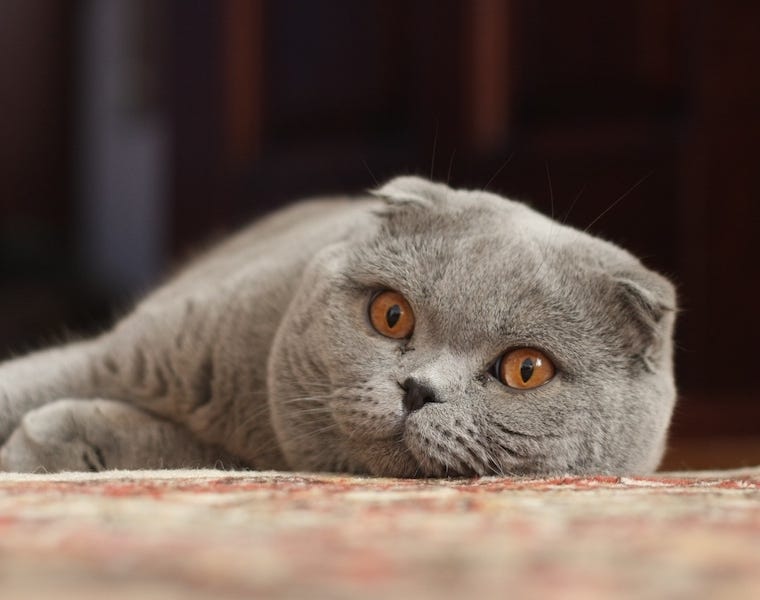
Every Scottish Fold cat alive today can trace his or her ancestry back to a barn cat named Susie. In Scotland in 1961, a shepherd named William Ross found Susie, a longhaired white female with distinct folded ears. Susie was bred with various other breeds like Persians, American Shorthairs, and Exotic Shorthairs to achieve the sweet, round look of Scottish Folds today. The Scottish Fold is known for sitting up like a human, affectionately coined “the Buddha sit.”
Cornish Rex
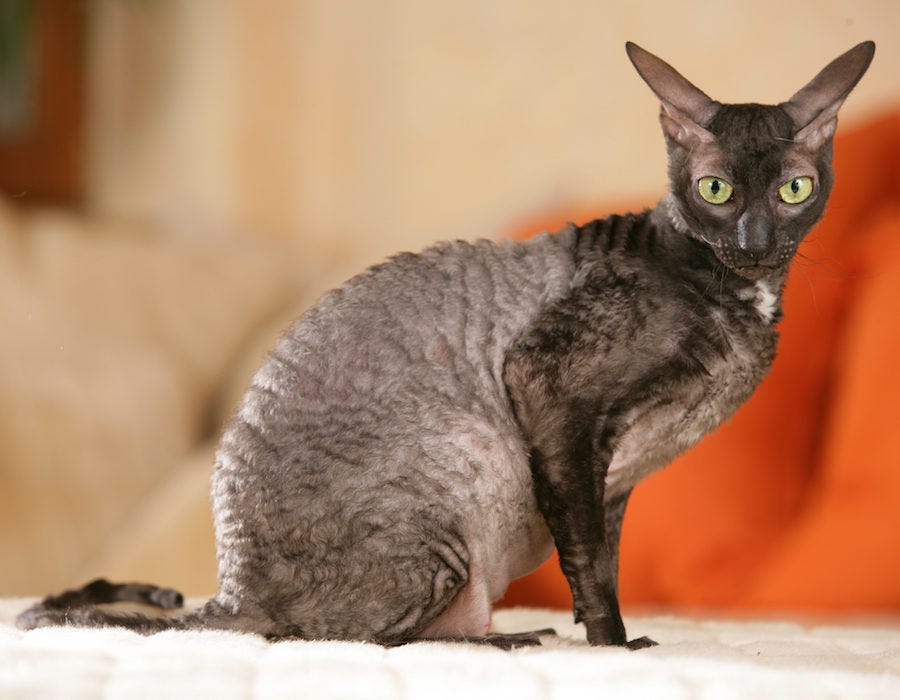
In 1950s Cornwall, England, a litter of barn cats was born containing one curly-haired kitten. This cream-colored male, named Kallibunker, had the appearance of a miniature lamb. The curly-coated cat was bred with Burmese, Siamese, and British domestic shorthair cats, resulting in a broad genetic base for the Cornish Rex breed. These cats are often dog-like, and love to play fetch.
American Wirehair
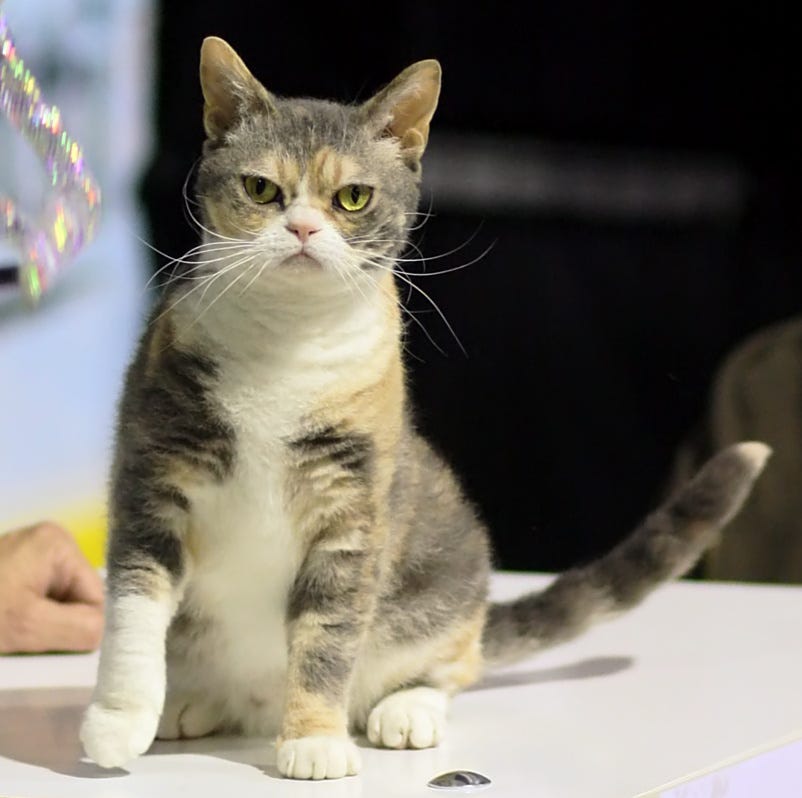
The first American Wirehair was found in a litter born on a farm in Verona, New York, as a mutation of two domestic shorthair cats. The red-and-white male kitten had a sparse, wiry coat, not unlike the wool of a lamb. This mutation is still relatively uncommon. The American Wirehair serves as a good family cat.
LaPerm

The first curly-coated LaPerm was born in 1982 in an otherwise normal litter of barn kittens. This kitten, named Curly, eventually became pregnant to one of the farm’s tomcats. All five kittens born were male and grew up to have the same soft curls. The LaPerm is known to be a clever and clownish cat that may even like to play fetch.
York Chocolate
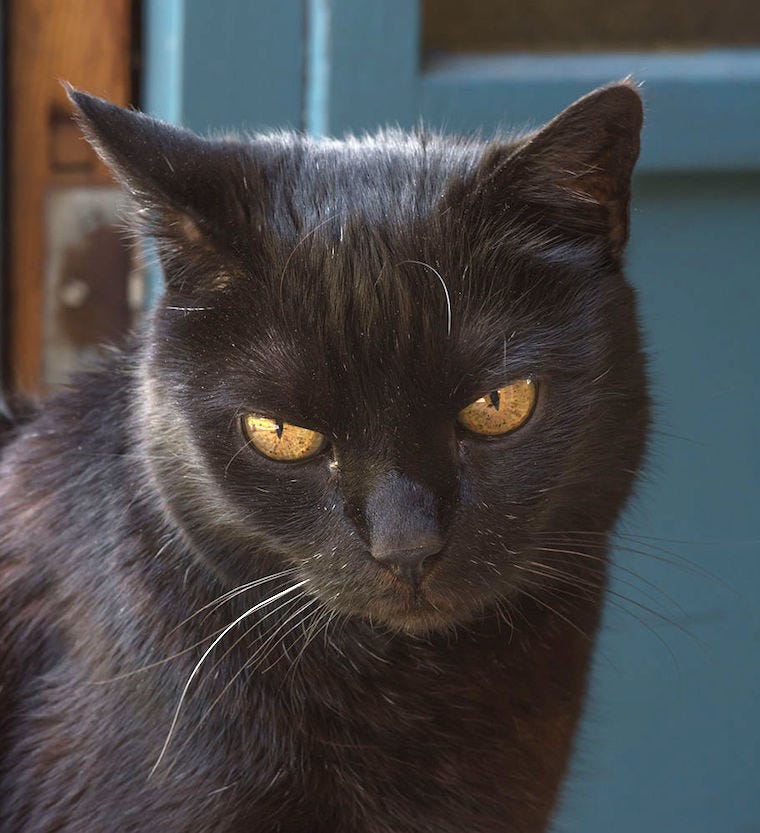
The York Chocolate breed began life on a goat dairy farm in the 1980s: A chocolate-hued kitten was born to a litter of black and white cats. The rich color and sweet temperament of this kitten caught the eye of the farm owner, who bred many more chocolate cats over the next few years. What separates a York Chocolate from the traditional barn cat is her lustrous coat and typically friendly personality.



